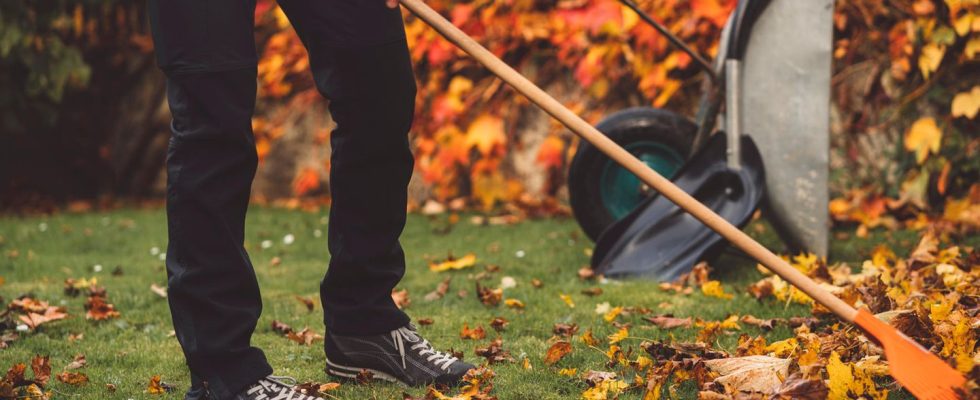Tips & Tools
Raking leaves in autumn: is it necessary? And if so, how to do it correctly?
Raking leaves is important in certain areas of the garden. Anyone who then distributes it in the right places will benefit from it in spring at the latest.
© Ziga Plahutar/Getty Images
Howling autumn wind is currently blowing the leaves off the trees. But the gold-yellow carpet doesn’t bring joy everywhere. Where and why raking leaves is important and how you can do good with the colorful leaves.
By the time the clocks are turned back to winter time, even the last leaves on the trees will no longer defend themselves. Autumn storms sweep through the cities and across the country and “free” chestnuts, oaks, beeches and other deciduous trees from their colorful, heavy burden of leaves. At the same time, a colorful carpet of golden-yellow leaves forms on the streets, in parks and gardens. For children, the greatest fun in autumn is the piles of leaves and running around in the rustling leaves. For many allotment gardeners, the joy of seeing the sea of leaves is limited. The autumn wind also blows the leaves off the fruit trees and spreads the leaves wildly on the terrace and lawn. In addition, the wet leaves also tend to clog gutters and downpipes (more about You can read about leaf protection for gutters here).
In short: leaf rakes, rakes and hands are the most important gardening tools in autumn. But is raking leaves even necessary? Can’t the colorful leaves just stay on the meadow and in the beds? Nope. The article reveals why there is no clear answer and what the golden mean might look like.
Raking leaves: what speaks for it – and what speaks against it
Leaves are organic material and are therefore inherently a good thing for the garden. Beds, tree slices, hedges, perennials, shrubs and other woody plants in particular enjoy a blanket of leaves in the cold season. Over the winter, the foliage initially protects the roots, provides excellent insulation and, in the best case, prevents frost damage. In addition, many insects feel right at home in the cozy, warm mountains of leaves and overwinter there. The leaves are gradually decomposed and can be easily incorporated into the soil in spring as an organic fertilizer such as humus. So rake or sweep the leaves consistently with a regular leaf mower Fan broom together and distribute it generously under trees, on beds and in borders.
What provides nutrient-rich soil there in spring doesn’t taste good to the lawn. Because the stalks already get little light in autumn and winter. If a colorful carpet of leaves also makes itself comfortable on the meadow, the green groans even more. The unpleasant consequences: The lawn becomes mossy and begins to rot. So regularly clear the lawn of leaves lying around and spread exactly these leaves on the beds and borders. (Click here star-Article Moss in the lawn – a handful of tips against annoying thatch.)
Raking with heart: This is how the pile of leaves becomes a hedgehog’s quarters
If you run out of space, there is an animal-friendly alternative. From November and on the first frosty nights, hedgehogs can hardly find safe places to sleep. Rake the remaining leaves from the lawn with a Rake in a suitable corner of the garden into a loose, colorful pile. A prickly four-legged friend may soon move in there and hibernate in the sea of leaves. Every now and then hedgehogs make themselves comfortable under hedges. Raked leaves are also very welcome there.
Raking leaves in autumn: The most important information in a nutshell
- The leaves can remain on beds, in borders and under trees.
- Raking leaves is especially important on lawns.
- Leaves are organic material and serve as valuable humus in spring.
- Autumn leaves take away the sparse light from blades of grass – the green can rot.
- Sweep remaining leaves into a pile – hedgehogs are happy.
- Leftover leaves belong in the compost or in the organic waste bin.
Conclusion: Raking leaves can also be fun. Anyone who efficiently removes the colorful leaves and places them in the right places will benefit from them next spring at the latest. What’s more, you can build a cozy winter quarters for a four-legged garden resident without much effort.
Sources:nabu.de
You might also be interested in:
This article contains so-called affiliate links. Further information are available here.


